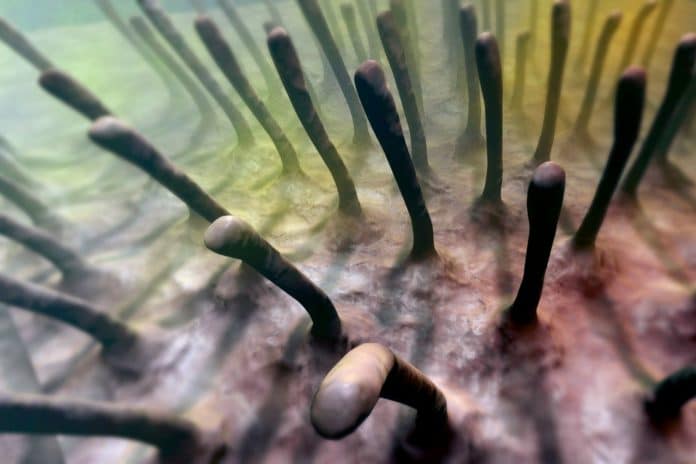Sperm has developed a unique swimming technique. It was believed that sperm had been postulated to swim forward by merely moving their flagellum symmetrically from side to side.
But, sperms don’t swim by themselves. Carpets of tiny hairs called cilia lining the inside of the fallopian tubes help them swim upwards.
How cilia move fluids and small particles in the body remains elusive. Now, UO theoretical physicist John Toner has offered an explanation for this.
Toner created a mathematical model that explains how the cilia align to move particles in a consistent direction. The fluid flowing above the cilia helps the hairs wave in the same direction and push the particles along.
Toner said, “In biological systems, much of the important action is happening at a surface where a solid meets a fluid. What I realized is, that’s a very different kind of flocking than what I’d been thinking about.”
In addition to sperm, cilia also help in other kinds of crucial movements inside the body, including removing mucus from the lungs.
Toner said, “They’re interesting challenge from a physics perspective because the hairs are fixed in place on one end.”
The liquid moving over the cilia has a significant effect, giving the cilia a motion for alignment in one direction. This alignment creates a feedback loop that propels the fluid in a consistent direction.
Toner said, “Individual hairs make small mistakes, but the overall fluid drags it back- like getting pulled into the current of a river.”
Toner is looking forward to improving his model to replicate what’s seen in biological systems closely.
He said, “We treated the fluid above the cilia carpet as if it was infinitely deep. But fluid in the body usually moves through small channels. Limiting the depth of the fluid in the model will change the projected interactions between the cilia. How this changes the overall behavior of the whole system remains an open question.”
Journal Reference:
- Niladri Sarkar et al., Hydrodynamic theory of flocking at a solid-liquid interface: Long-range order and giant number fluctuations, Physical Review E (2021). DOI: 10.1103/PhysRevE.104.064611
- Niladri Sarkar et al., Swarming Bottom Feeders: Flocking at Solid-Liquid Interfaces, Physical Review Letters (2021). DOI: 10.1103/PhysRevLett.127.268004
